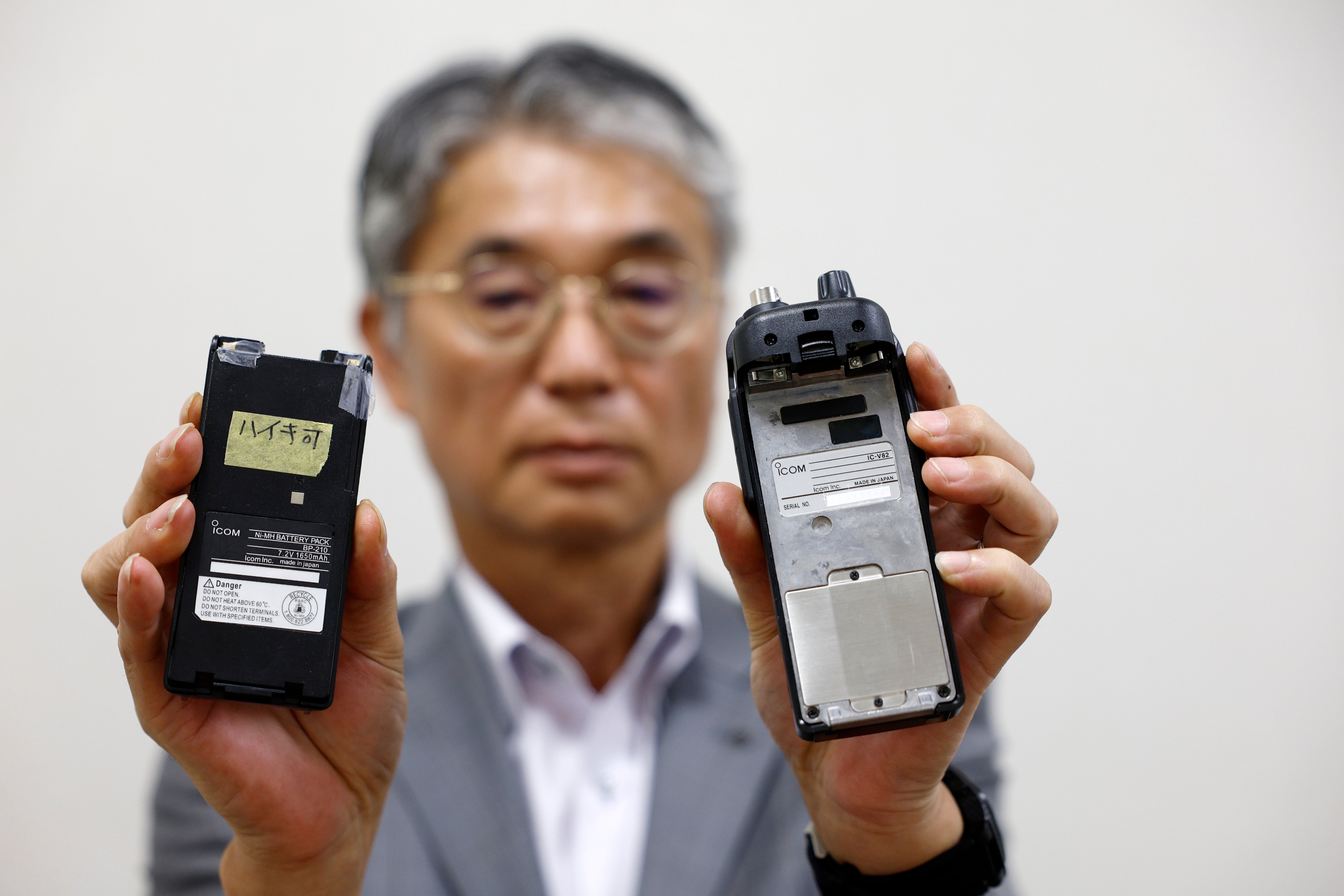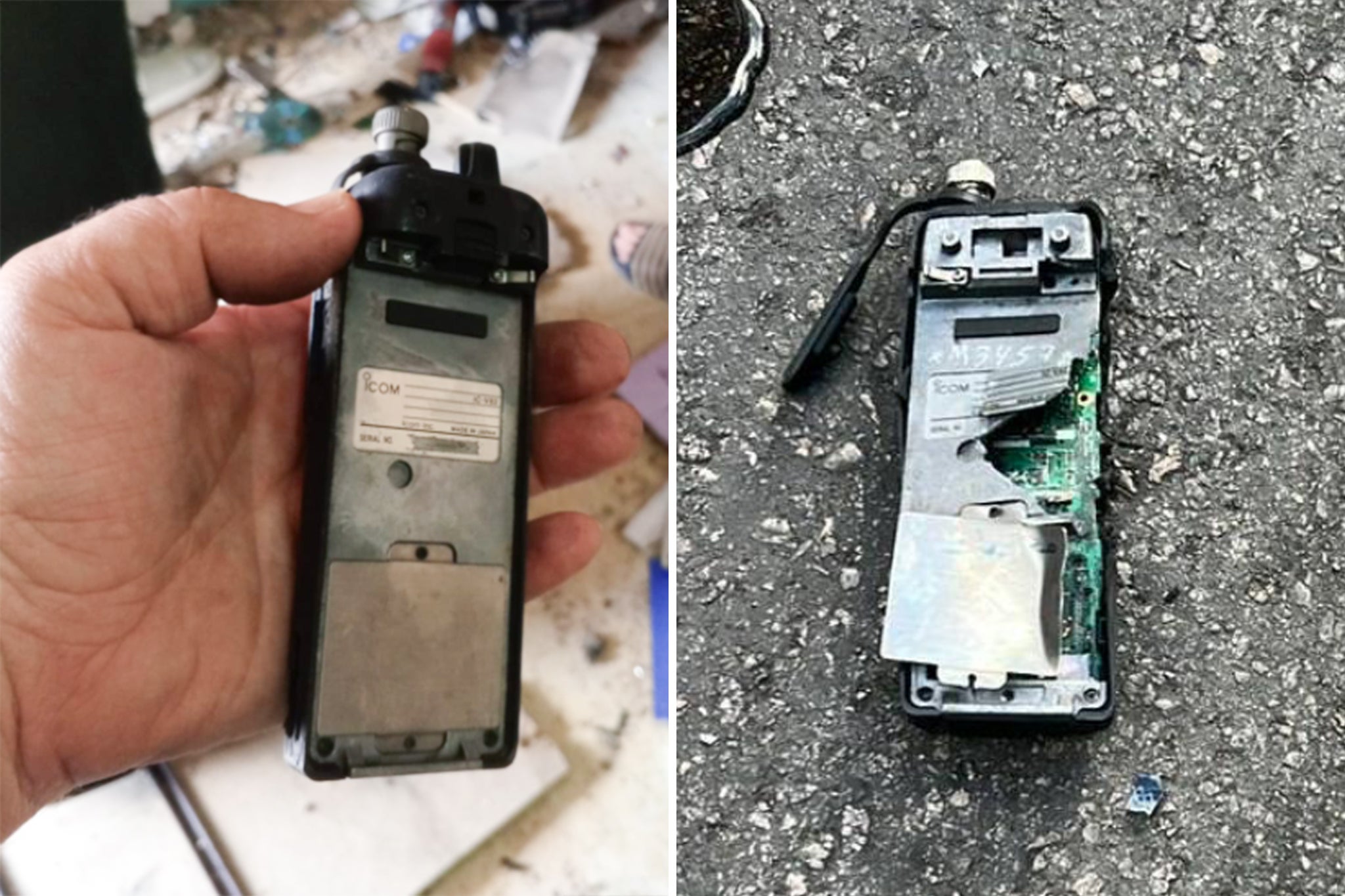Japan company denies making Hezbollah walkie-talkies that exploded in Lebanon
Hezbollah’s hand-held radios detonated in second attack killing 20 after 12 died in pager explosions day before
Your support helps us to tell the story
From reproductive rights to climate change to Big Tech, The Independent is on the ground when the story is developing. Whether it's investigating the financials of Elon Musk's pro-Trump PAC or producing our latest documentary, 'The A Word', which shines a light on the American women fighting for reproductive rights, we know how important it is to parse out the facts from the messaging.
At such a critical moment in US history, we need reporters on the ground. Your donation allows us to keep sending journalists to speak to both sides of the story.
The Independent is trusted by Americans across the entire political spectrum. And unlike many other quality news outlets, we choose not to lock Americans out of our reporting and analysis with paywalls. We believe quality journalism should be available to everyone, paid for by those who can afford it.
Your support makes all the difference.The Japanese maker of the brand of walkie-talkies thought to have exploded in Lebanon has denied making the detonating devices – but has given its take on what could have been used.
Hand-held radios used by armed group Hezbollah detonated across Lebanon's south on Wednesday, stoking tensions after similar explosions of pagers the day before.
Lebanon's health ministry said 20 people were killed and more than 450 injured on the second attack in Beirut's suburbs and the Bekaa Valley, while the death toll from Tuesday's explosions rose to 12, including two children, with nearly 3,000 injured.

Israeli officials have not commented on the blasts, but security sources said Israel's spy agency Mossad was responsible.
The Japanese communication equipment company ICOM is believed to be the maker of the brand of walkie-talkies linked to the explosions – but it insisted it could not have made the hand-held radios.
“There’s no way a bomb could have been integrated into one of our devices during manufacturing. The process is highly automated and fast-paced, so there’s no time for such things,” Yoshiki Enomoto, a director at ICOM, told Reuters outside the company's headquarters in Osaka, Japan on Thursday.

ICOM has said it halted production of the radio models identified in the attack a decade ago and that most of those still on sale were counterfeit.
“If it turns out to be counterfeit, then we’ll have to investigate how someone created a bomb that looks like our product. If it’s genuine, we’ll have to trace its distribution to figure out how it ended up there,” Mr Enomoto said.

Mr Enomoto did suggest the devices used in the attacks could have been a discontinued model containing modified batteries.
“We can’t rule out the possibility that they are fakes, but there is also a chance the products are our IC-V82 model,” the Guardian reported Enomoto said, according to the Kyodo news agency.
Enomoto pointed to images showing damage to the battery area of the devices used, suggesting the power packs could have been replaced with those that had been modified to explode.
The company sold roughly 160,000 units of the model in Japan and overseas before it halted production and sales in 2014. The firm said the IC-V82 handheld radio had been exported overseas between 2004 and 2014, including to the Middle East.




Join our commenting forum
Join thought-provoking conversations, follow other Independent readers and see their replies
Comments